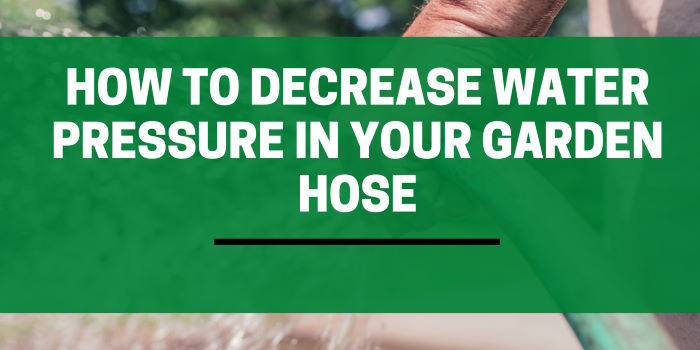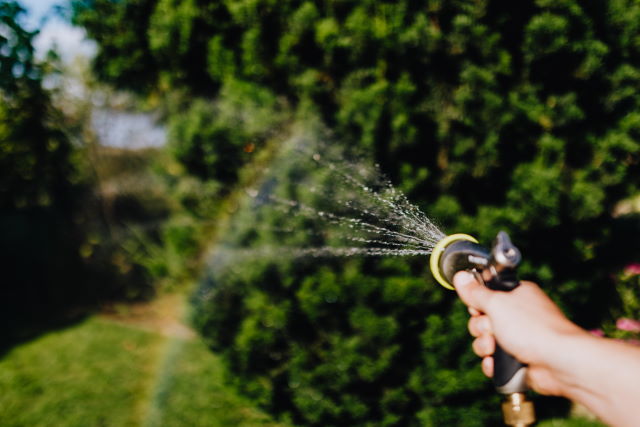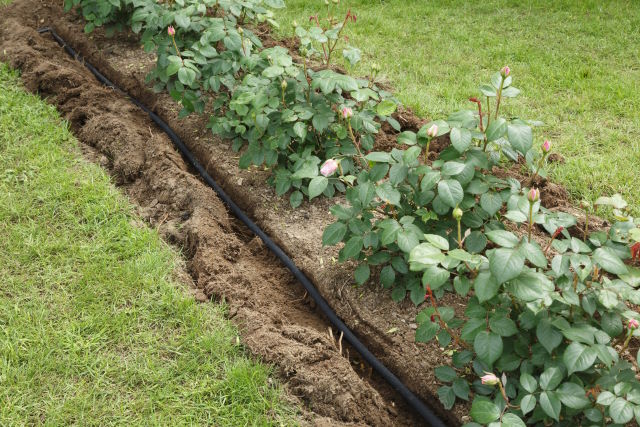
Are you tired of dealing with a garden hose that deals with too much water pressure? Maybe the high water pressure is spraying water everywhere, wasting water, or damaging your plants.
Needing to reduce the water supply pressure in your garden hose is a common problem that many gardeners face. Luckily, there are a few simple steps you can take to decrease water pressure and make watering your garden easier.

In this article, we’ll explore the best ways to lower the water pressure in your garden hose.
Contents
Understanding Water Pressure
Water pressure is the force that pushes water through a pipe or hose. The pressure is measured in pounds per square inch (PSI). Some gardeners also metrics to understand the volume of water that can flow through a hose. Gallons per minute (GPM), gallons per hour (GPH), or a water flow rate or a garden hose can be calculated to understand the gallons of water per minute that can pass through a hose.
The ideal flow rate is between 6 and 12 GPM.
Most residential water systems have a pressure of around 40-60 PSI. However, if your water pressure is too high, it can cause damage to your pipes and appliances. High pressure from an outdoor faucet can damage your garden hose, attachments, and plants. So in some cases, it may be better to water your garden without a hose.
How to Decrease Water Pressure in Your Garden Hose
Use a Pressure Regulator
One of the simplest ways to reduce water pressure to a more manageable level in your garden hose is to use a pressure regulator or pressure-reducing valve. A pressure regulator is a small device that attaches to your hose bib or outdoor spigot and often includes a water pressure gauge.
You can also have a water pressure regulator that fits onto your main water source pipe near to the water meter, reducing the incoming pressure to your entire hose.
A water mains fitted valve can help to prevent high-pressure damage to home appliances, toilets, and shower heads.
They reduce the water pressure before it enters your garden hose. Pressure regulators are usually easy to install and can be found at most hardware stores or online
Use a Flow Control Valve
Another way to decrease water pressure in your garden hose is to use a flow control valve. This valve attaches to the end of your garden hose and gives you adjustable control of the water flow.
They are simple to fit as they simply attach to your hose thread. By having control of the flow of water, you can effectively decrease the water pressure with a tap or adjustment screw attached to the device.
Install a Soaker Hose
If you have a large garden or a lot of plants that need watering, consider installing a soaker hose. Soaker hoses and drip irrigation systems are designed to release water slowly and evenly, which can help reduce water pressure.
These systems often consist of drip tapes, emitters, and poly tubing.
The water seeps into the soil, providing a deep and thorough watering for your plants. Soaker hoses are also great for conserving water and reducing water waste.

A soaker hose can be combined with a flow control valve or pressure regulator for simple watering at a steady pressure.
Use a Garden Hose Nozzle
A nozzle can be attached to the hose to control water pressure and the flow of water. Many nozzles even have adjustable settings that allow you to control the pressure and the type of spray.
Conclusion
Managing water pressure issues in your garden hose is a simple process that can be done using a few different methods. By using a pressure regulator, flow control valve, soaker hose, or garden hose nozzle you can effectively reduce water pressure and prevent damage to your plants and garden.
If you are using city water or municipal water, the pressure will depend on your location and number water supply demand in your area.
Remember to check your water pressure to ensure it’s within a safe range.
FAQs
Can high water pressure damage my garden hose?
Yes, high water pressure can cause damage to your garden hose, as well as your pipes and appliances.
How do I know if my water pressure is too high?
You can check your water pressure using a pressure gauge. Most residential water systems have a pressure of around 40-60 PSI.
Can I use a pressure regulator on any hose?
Yes, a pressure regulator can be used on any hose, as long as it’s the correct fitting size for your hose bib and garden hose.
Will reducing water pressure affect my plants?
No, reducing water pressure will not harm your plants. In fact, it can be beneficial as it provides a gentler and more even watering experience for your plants.
What should I do if I can’t find a pressure regulator or flow control valve at my local hardware store?
If you’re unable to find a pressure regulator or flow control valve at your local hardware store, consider looking online or contacting a professional plumber for assistance. They can help you find the right product and ensure that it’s installed properly.
Can reducing the water pressure in my garden hose save money on my water bill?
Yes, reducing water pressure in your garden hose can help save money on your water bill by reducing the amount of water used during each watering session. Additionally, a more controlled and efficient watering experience can help prevent water waste and lower your overall water usage.
